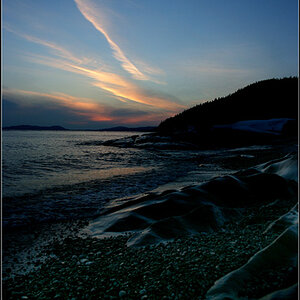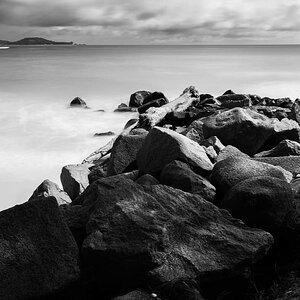jocose
TPF Noob!
- Joined
- Sep 16, 2005
- Messages
- 3,059
- Reaction score
- 118
- Location
- dans la pissoir
- Website
- www.musingsofjocose.com
- Can others edit my Photos
- Photos NOT OK to edit
Photo Gurus,
I have a question for you. I was reading through the thread of defs and concepts for newbies (like ME). It's great!
Someone (sorry I can't remember who) was talking about grain and how to get more or less in your prints. I'm curious, is there a way to control grain in a digital camera? I know you can go into software like Adobe Photoshop and play around with the image to get these kinds of effects, but is it possible to do it directly from the camera?
Also, I guess while I'm at it, a similar question is is it even worth it? That is, one of the things I was really excited about when I get my camera was that I could go from B/W to color right in the camera, but recently I have just taken the color pic and then removed the color in Photoshop.
I have a question for you. I was reading through the thread of defs and concepts for newbies (like ME). It's great!
Someone (sorry I can't remember who) was talking about grain and how to get more or less in your prints. I'm curious, is there a way to control grain in a digital camera? I know you can go into software like Adobe Photoshop and play around with the image to get these kinds of effects, but is it possible to do it directly from the camera?
Also, I guess while I'm at it, a similar question is is it even worth it? That is, one of the things I was really excited about when I get my camera was that I could go from B/W to color right in the camera, but recently I have just taken the color pic and then removed the color in Photoshop.








![[No title]](/data/xfmg/thumbnail/37/37603-739c5d9b541a083a12f2f30e45ca2b7b.jpg?1619738147)


![[No title]](/data/xfmg/thumbnail/37/37605-90c8efaef5b7d1f52d4bf8e7dfd33673.jpg?1619738148)

